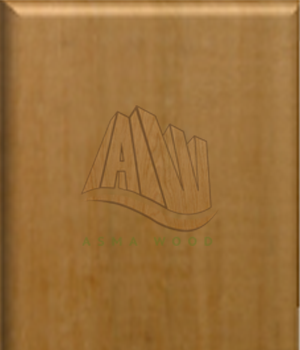NATURAL DURABILITY
The timber is classified as naturally durable and is normally very resistant to termite attack and fungal infestation.
Under graveyard test conditions, untreated specimens of size 50 mm x 50 mm x 600 mm lasted 9 years. Treated specimen of the same size and test conditions
lasted about 19 years. Untreated railway sleepers of size 238 mm x 125 mm x 1,950 mm laid under severe environmental conditions gave an average service life of
19 years.
PRESERVATIVE TREATMENT
This timber has been classified as moderately difficult to treat.
TEXTURE
Texture is fine and even, with shallowly to deeply interlocked grain.
STRENGTH PROPERTIES
The timber falls into Strength Group A (Engku, 1988b) or SG 1 (MS 544:Part 2:2001).
Strength Properties of Chengal
| Test Condition |
Modulus of Elasticity (MPa) |
Modulus of Rupture (MPa) |
Compression parallel to grain (MPa) |
Compression perpendicular to grain (MPa) |
Shear strength(MPa) |
| Green |
18,100 |
112 |
69 |
12 |
14 |
| Air dry |
19,600 |
149 |
75 |
12 |
14 |
MACHINING PROPERTIES
It is slightly difficult to resaw and is easy to moderately easy to cross-cut. Planing is easy and the planed surface produced is smooth.
Machining Properties of Chengal
| Condition |
Sawing |
Planning |
Boring |
Turning |
|
Rip Sawing |
Cross Cutting |
Ease of planing |
Quality of finish |
Ease of boring |
Quality of finish |
Ease of Turning |
Quality of Finish |
| Green |
Slightly difficult |
Easy |
Easy |
Smooth |
Easy |
Smooth |
- |
- |
| Air dry |
Slightly difficult |
Moderately easy |
Easy |
Smooth |
Easy |
Smooth |
Easy |
Smooth |
>
Nailing Property
Nailing property is rated as very poor.
Air drying
The timber seasons slowly with moderate end-checking and surface-checking as the main sources of degrade. 13 mm thick boards take approximately 5
months to air dry, while 38 mm thick boards take 6 months.
Kiln-Drying
Kiln Schedule B is recommended. The timber dries very slowly and is extremely prone to surface-checking. 25 mm thick boards take approximately
30 days to kiln-dry from 50% to 10% moisture content.
Kiln Schedule G
| Moisture Content(%) |
Temperature (Dry Bulb) |
Temperature (Wet Bulb) |
Relative Humidity (%)(approx.) |
|
F
|
F
|
F
|
F
|
|
| Green |
105 |
40.5 |
101 |
38.0 |
85 |
| 40 |
105 |
40.5 |
99 |
37.0 |
80 |
| 30 |
110 |
43.5 |
102 |
39.0 |
75 |
| 25 |
115 |
46.0 |
105 |
40.5 |
70 |
| 20 |
130 |
54.5 |
115 |
46.0 |
60 |
| 15 |
140 |
60.0 |
118 |
47.5 |
50 |
SHRINKAGE
Shrinkage is fairly low, with radial shrinkage averaging 1.1% and tangential shrinkage averaging 2.6%.
Defects
Small pin-holes, caused by ambrosia beetles boring into the living trees, are a common and characteristic defect of chengal. These small holes are often numerous,
but although unsightly, they are only in exceptional cases sufficiently numerous to impair the strength of the timber. These ambrosia beetles die when the timber is
seasoned and thus the damage is restricted almost entirely to that which occurs in the green timber. Big trees of chengal are sometimes hollow at the centre and badly
attacked by large borers, and occasional trees are seriously infected by a fungus (Fomes spp.), which initially gains entry through broken branches or other wounds and
eventually reduces the timber to a dark pulpy condition. With the exception of pin holes, the timber of chengal is free from knots and other defects characteristic of sawn
timber.
USES
The timber is suitable for all forms of heavy construction, railway sleepers, heavy duty furniture, laboratory benches, bridges, marine construction, boat building,
telegraphic and power transmission posts and cross arms, piling, mallets, flooring (heavy traffic), decking, vehicle bodies (framework and floor boards), fender supports,
cooling towers (structural members), staircase (balusters, carriages, handrails, newels, risers, stringers, treads, bullnoses, round ends and winders), columns (heavy duty),
door and window frames and sills, tool handles (impact), carving works and other uses where strength and durability are required.
REFERENCES
Engku Abdul Rahman Chik. 1988b. Basic and Grade Stresses for Strength Groups of Malaysian Timbers. Malayan Forest Service Trade Leaflet No. 38.
The Malaysian Timber Industry Board and Forest Research Institute Malaysia, Kuala Lumpur. 13 pp.
Lopez, D.T. 1983. Malaysian Timbers - Chengal. The Malaysian Timber Industry Board and Forest Research Institute Malaysia, Kuala Lumpur. 7 pp.
MS 544:Part 2:2001. Code of Practice for the Structural Use of Timber: Permissible Stress Design of Solid TImber.
Menon, P.K.B. 1986. Uses of Some Malaysian Timbers. Revised by Lim, S.C. Timber Trade Leaflet No. 31. The Malaysian Timber Industry Board and Forest Research
Institute Malaysia, Kuala Lumpur.48 pp.
Wong, T.M. 1982. A Dictionary of Malaysian Timbers. Revised by Lim, S.C. & Chung R.C.K. Malayan Forest Records No. 30. Forest Research Institute Malaysia, Kuala Lumpur.
201 pp.

